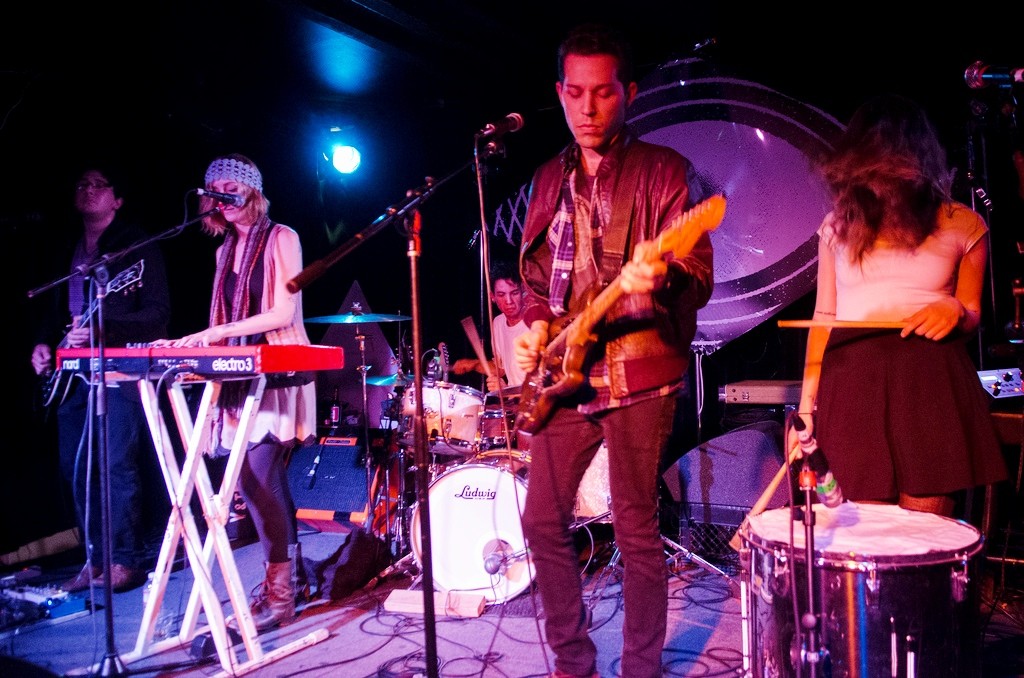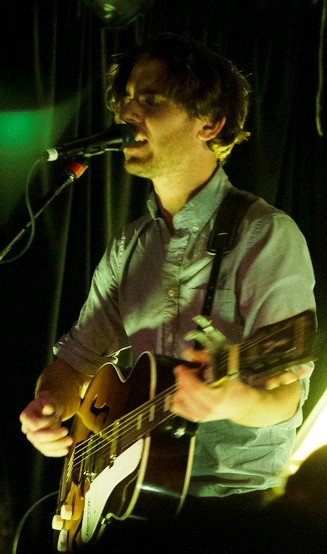Article Contributed by Jason Chiu
Published on November 19, 2012

Small venues are a mixed bag. Maybe it’s due to the prevalence of festivals popping up over the land or just the trend of me attending more concerts in larger venues, but smaller venues don’t sound quite as good as they did before. Don’t get me wrong, Cafe du Nord is a wonderful place. As mentioned before, it’s a really charming former speakeasy, but its’ intimacy is a gift and a curse. Tuesday’s Generationals show was a perfect example for why this is so.
While the Pokey LaFarge show I covered previously was moderately attended, tonight’s Generationals show was sold out. The venue was buzzing, the line at the bar two-people deep, and the dim lighting looked even dimmer with bodies blocking the lamps. I was at a meetup with a group of people from a social networking site, and it was nearly impossible to hear the person sitting next to me. People weren’t shouting or anything. There was just more of everything at this show.
Races, a casual sextet from the Los Angeles area, came on first and played cleanly through a set of distortion-laden jams and half-step pop to a semi-interested crowd. The audience wasn’t disrespectful in any way, but people weren’t really getting into it either. It’s hard to fault them on a Tuesday night in a laid-back venue, listening to songs most people wouldn’t consider fire-starters. But at least some rocking back and forth would have been appreciated.
As for the band itself, I was largely impressed with the composition of their songs. It’s a minor thing, but some of the slower pieces were actually in 6/8, a time signature largely ignored by the majority of rock/pop musicians. The music major is me was giddy. The six players all seemed to align to tropes, but that wasn’t a bad thing. Members seenmed to run the gamut, with a modest guitarist standing in the corner casually shredding in ways I haven’t seen in a long while. The drummer happily banged on the skins in the back, even though the keyboardist in front of him obstructed his view. The lead singer let his vocals be his presence on the stage, while the enthusiastic percussionist/backing vocalist stood beside him, getting the crowd excited in between songs. The intimate setting forced some members to play at the ends of the stage out of view (another problem with small venues). But the feeling of being right up there with the performers is something to treasure. You’re close enough to see the brand of pick the guitarist uses. You can feel the full force of the band as they play their music, and given as good a sound mix as Races had, it’s a great feeling.
 Generationals had a less fortunate sound mix. The vocals were often mixed too low, and their minimalistic melodies frequently got drowned out by their own instruments. The drums, even without miking, were the loudest thing there, especially when the cymbals were hit. The bass was a bit too commanding, and the synths were too muted. The first few songs were a bit of a mess, which was a shame, since they played some of my favorites at the beginning. One of their most well-known tracks, “Ten-Twenty-Ten” especially suffered from this mix, as the guitar-noodling that is the song’s calling card was inaudible.
Generationals had a less fortunate sound mix. The vocals were often mixed too low, and their minimalistic melodies frequently got drowned out by their own instruments. The drums, even without miking, were the loudest thing there, especially when the cymbals were hit. The bass was a bit too commanding, and the synths were too muted. The first few songs were a bit of a mess, which was a shame, since they played some of my favorites at the beginning. One of their most well-known tracks, “Ten-Twenty-Ten” especially suffered from this mix, as the guitar-noodling that is the song’s calling card was inaudible.
Their more melodic pieces fared much better. Actor-Caster highlights “Goose and Gander” and “Greenleaf” sounded much better, as the catchy melodies stuck out over the somewhat hectic mix. Perhaps the issue with close quarters like Cafe du Nord is the fact that there is so little room to adjust the sound. With larger venues, especially amphitheaters, sound technicians have lots of room to play with the levels, as there’s a larger amount of amps to create the right soundscape. With smaller stages some instruments, such as the drums, do not have any room for the noise to dissipate, leading to their overbearing sound. You can’t turn them down like you can in larger venues, and you can’t turn all the other instruments up without blowing out the speakers, or worse–making the concert less enjoyable for the audience.
 Another nitpick was that the light show behind the band was a rather odd choice. The lights were arranged in sharp, fractal-like patterns, mimicking the album cover of their latest EP. The back structure was a black and off-white diamond, featuring the eye on said EP cover, which looked imposing at the rear of the stage. Overall the setup was rather cold, especially when mixed in with the fluorescent strobe lights. It’s a setup more akin to a metal group or a hardcore dance act, not the 60s-influenced pop-rock the band plays. This was a sticking point at first, but my discomfort lessened as the band found its stride. The driving guitars, playful rhythms, and warm vocals eventually all came together to make an enjoyable evening.
Another nitpick was that the light show behind the band was a rather odd choice. The lights were arranged in sharp, fractal-like patterns, mimicking the album cover of their latest EP. The back structure was a black and off-white diamond, featuring the eye on said EP cover, which looked imposing at the rear of the stage. Overall the setup was rather cold, especially when mixed in with the fluorescent strobe lights. It’s a setup more akin to a metal group or a hardcore dance act, not the 60s-influenced pop-rock the band plays. This was a sticking point at first, but my discomfort lessened as the band found its stride. The driving guitars, playful rhythms, and warm vocals eventually all came together to make an enjoyable evening.
The set could have been underwhelming, but the band got better and better, peaking with their most famous song, “When They Fight, They Fight.” One of their biggest fans, who’d made a successful video for the song, was in the crowd this evening, and the band invited him up onstage. They let him sing along, and he absolutely nailed it, eliciting the loudest cheers of the crowd to that point. There were so many ways that could have gone wrong, and to see it succeed as beautifully as it did was special.
For the majority of the concert the audience was content to bop along to the pleasant music, but that’s what the setting of it all was. The concert wasn’t meant to get people jumping and shouting, but rather it was a fun way to spend a Tuesday night. The sound wasn’t the best, but it wasn’t a deal-breaker. It was a rock show in a small venue where I got to see a band I like up close, and there’s a simple joy in that.